 W
WHarrison Albright was an American architect best known for his innovative design of the West Baden Springs Hotel in Orange County, Indiana, which boasted the largest free-spanning dome in the world at the time of its construction.
 W
WNils F. Ambursen was a Norwegian-American civil engineer and inventor. He was the founder of Ambursen Hydraulic Construction Company and was known for his influential dam designs in the early 20th century.
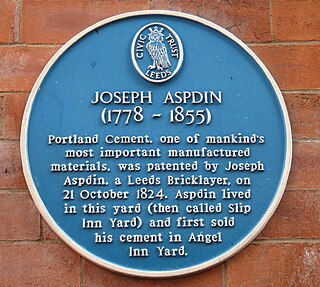 W
WJoseph Aspdin was an English cement manufacturer who obtained the patent for Portland cement on 21 October 1824.
 W
WWilliam Aspdin was an English cement manufacturer, and a pioneer of the Portland cement industry. He is considered the inventor of "modern" Portland cement. He has also been termed "an incorrigible liar and swindler".
 W
WMax Berg was a German architect and urban planner.
 W
WAbraham Burton Cohen was an American civil engineer notable for his role in designing innovative and record-breaking concrete bridges such as the Delaware, Lackawanna and Western Railroad's Tunkhannock Viaduct, the world's largest concrete structure when completed. Cohen was an active member of the American Concrete Institute and earned ACI's Wason Medal for Most Meritorious Paper in 1927.
 W
WEdmond Coignet was a French engineer and entrepreneur. He has been instrumental in the theory of reinforced concrete.
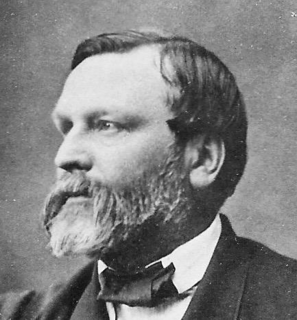 W
WFrançois Coignet was a French industrialist and a pioneer in the development of reinforced concrete as the first person to use iron-reinforced concrete to construct buildings.
 W
WTallington is a village and civil parish in the South Kesteven district of Lincolnshire, England. The population of the civil parish at the 2011 census was 497. It is situated 4 miles (6 km) east from Stamford and 8 miles (13 km) north-east from the centre of Peterborough. The village has around 200 houses.
 W
WEugène Freyssinet was a French structural and civil engineer. He was the major pioneer of prestressed concrete.
 W
WFrançois Hennebique was a French engineer and self-educated builder who patented his pioneering reinforced-concrete construction system in 1892, integrating separate elements of construction, such as the column and the beam, into a single monolithic element. The Hennebique system was one of the first appearances of the modern reinforced-concrete method of construction.
 W
WJacques-René Hermant was a French architect, one of the most renowned architects of fin-de-siècle Paris.
 W
WWilliam S. Hewett was a major bridge contractor in the Minneapolis area from the 1890s until well into the 20th century. His firm designed and built a number of bridges for the Twin City Rapid Transit Company when it was electrifying and expanding its system around the turn of the 20th century.
 W
WThe Ingalls Building, built in 1903 in Cincinnati, Ohio, is the world's first reinforced concrete skyscraper. The 16-story building was designed by the Cincinnati architectural firm Elzner & Anderson and was named for its primary financial investor, Melville E. Ingalls. The building was considered a daring engineering feat at the time, but its success contributed to the acceptance of concrete construction in high-rise buildings in the United States. It was converted to a hotel, the Courtyard by Marriott Cincinnati Downtown, in 2021.
 W
WRonald Stewart Jenkins was a British civil engineer, known for designing the Mulberry Harbours in World War II, in 1944.
 W
WAlbert Kahn was an American industrial architect. He was accredited the architect of Detroit and designed industrial plant complexes such as the Ford River Rouge automobile complex. He designed the construction of Detroit skyscrapers and office buildings as well as mansions in the city suburbs. He led an organization of hundreds of architect associates and in 1937, designed 19% of all architect-designed industrial factories in the United States. Under a unique contract in 1929, Kahn established a design and training office in Moscow, sending twenty-five staff there to train Soviet architects and engineers, and to design hundreds of industrial buildings under their first five-year plan. They trained more than 4,000 architects and engineers using Kahn's concepts. In 1943, the Franklin Institute posthumously awarded Kahn the Frank P. Brown Medal.
 W
WJulius Kahn was an American engineer, industrialist, and manufacturer. He was the inventor of the Kahn system, a reinforced concrete engineering technique for building construction. The Kahn system, which he patented in 1903, was used worldwide for housing, factories, offices and industrial buildings. He formed his own company, Trussed Concrete Steel Company, as a manufacturing source for his inventions. He also founded United Steel Company and was chairman of Truscon Laboratories.
 W
WAugust Eduard Komendant was an Estonian and American structural engineer and a pioneer in the field of prestressed concrete, which can be used to build stronger and more graceful structures than normal concrete. He was born in Estonia and educated in engineering in Germany. After World War II he immigrated to the United States, where he wrote several books on structural engineering and served as a professor of architecture at the University of Pennsylvania.
 W
WJoseph-Louis Lambot, is the inventor of ferro-cement, which led to the development of what is now known as reinforced concrete. He studied in Paris, where his uncle Baron Lambot was aide-de-camp to the Duke of Bourbon.
 W
WJohn Buck Leonard was a pioneering bridge engineer and architect, early advocate for reinforced concrete, working mainly in northern California.
 W
WShu-tian Li was a Chinese-American hydraulic engineer. After receiving a Ph.D. degree in engineering and economics from Cornell University in 1926, Li returned to China to assume a professorship at the Peiyang University. He became the executive officer of Northern China Hydraulic Commission in 1928. He was a founder of the Chinese Hydraulic Engineering Society and served as its deputy president and then president for six terms. Later he was appointed to lead the Yellow River Commission.
 W
WRobert Maillart was a Swiss civil engineer who revolutionized the use of structural reinforced concrete with such designs as the three-hinged arch and the deck-stiffened arch for bridges, and the beamless floor slab and mushroom ceiling for industrial buildings. His Salginatobel (1929–1930) and Schwandbach (1933) bridges changed the aesthetics and engineering of bridge construction dramatically and influenced decades of architects and engineers after him. In 1991 the Salginatobel Bridge was declared an International Historic Civil Engineering Landmark by the American Society of Civil Engineers.
 W
WJames Barney Marsh was an American engineer and bridge designer. He patented a new design for arch bridges. Marsh gave Archie Alexander, the first African-American to graduate as an engineer from Iowa State University, his first job. Marsh worked in the bridge building business for over 50 years, and several of his bridges are listed in the National Register of Historic Places.
 W
WHenry Chapman Mercer was an American archeologist, artifact collector, tile-maker, and designer of three distinctive poured concrete structures: Fonthill, his home, the Moravian Pottery and Tile Works, and the Mercer Museum.
 W
WJoseph Monier was a French gardener and one of the principal inventors of reinforced concrete.
 W
WAuguste Perret was a French architect and a pioneer of the architectural use of reinforced concrete. His major works include the Théâtre des Champs-Élysées, the first Art Deco building in Paris; the Church of Notre-Dame du Raincy (1922–23); the Mobilier National in Paris (1937); and the French Economic, Social and Environmental Council building in Paris (1937–39). After World War II he designed a group of buildings in the centre of the port city of Le Havre, including St. Joseph's Church, Le Havre, to replace buildings destroyed by bombing during World War II. His reconstruction of the city is now a World Heritage Site.
 W
WAndrew Thomas Turton Peterson (1813–1906) was an Anglo-Indian barrister, spiritualist, socialist and amateur architect.
 W
WWilliam Lightfoot Price was an American architect, a pioneer in the use of reinforced concrete, and a founder of the utopian communities of Arden, Delaware and Rose Valley, Pennsylvania.
 W
WErnest Leslie Ransome (1852–1917) was an English-born engineer, architect, and early innovator in reinforced concrete building techniques. Ransome devised the most sophisticated concrete structures in the United States at the time.
 W
WAnghel Saligny was a Romanian engineer, most famous for designing the Fetești-Cernavodă railway bridge (1895) over the Danube, the longest bridge in Europe at that time. He also designed the storage facilities in Constanța seaport, one of the earliest examples of reinforced concrete architecture in Europe.
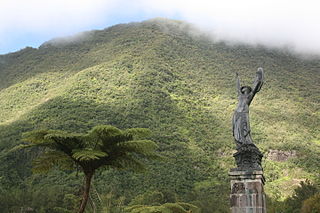 W
WCharles Marie Louis Joseph Sarrabezolles, also known as Carlo Sarrabezolles, was a French sculptor.
 W
WHermann Schüssler or Schussler was a German civil engineer and designer of dams, famous for designing the Crystal Springs Dam and Comstock water system.
 W
WJohn Smeaton was a British civil engineer responsible for the design of bridges, canals, harbours and lighthouses. He was also a capable mechanical engineer and an eminent physicist. Smeaton was the first self-proclaimed "civil engineer", and is often regarded as the "father of civil engineering". He pioneered the use of hydraulic lime in concrete, using pebbles and powdered brick as aggregate. Smeaton was associated with the Lunar Society.
 W
WThe Smith-Ransome Japanese Bridge of South Ferry Hills on Shelter Island, New York is one of the first 'reinforced concrete construction' structures built in North America by engineer Ernest L. Ransome for the mineral prospector known as the "Borax King", Francis Marion Smith. Installed in the late 19th century at Smith's East Coast estate, 'Presdeleau', it is an example of ferro-concrete construction enabling an elegant design of what was a popular early 20th century period piece, the Japanese style bridge. It is listed on the New York State and National Register of Historic Places as a significant historical landmark and one of the last surviving two by Ernest Ransome.
 W
WTallington is a village and civil parish in the South Kesteven district of Lincolnshire, England. The population of the civil parish at the 2011 census was 497. It is situated 4 miles (6 km) east from Stamford and 8 miles (13 km) north-east from the centre of Peterborough. The village has around 200 houses.
 W
WClaude Allen Porter Turner was an American structural engineer who designed a number of buildings and bridges, particularly in the midwestern U.S. states of Iowa, Minnesota, and Wisconsin.
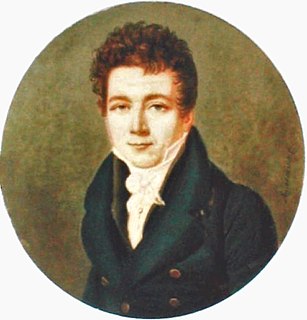 W
WLouis Vicat was a French engineer.
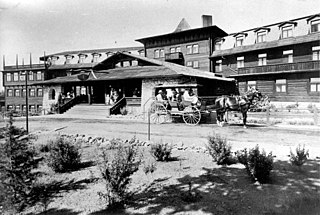 W
WCharles Frederick Whittlesey (1867–1941) was an American architect best known for his work in the American southwest, and for pioneering work in reinforced concrete in California.
 W
WThe William E. Ward House, known locally as Ward's Castle, is located on Magnolia Drive, on the state line between Rye Brook, New York and Greenwich, Connecticut, United States. It is a reinforced concrete structure built in the 1870s.